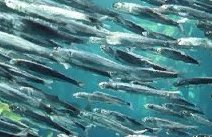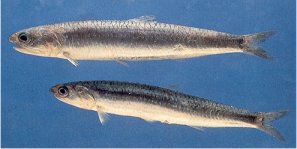 The Anchovy name is applied to any of several small, bony, schooling fish related to the herring, they are also closely associated with other small pelagic fish particularly pilchard and sprats.
The Anchovy name is applied to any of several small, bony, schooling fish related to the herring, they are also closely associated with other small pelagic fish particularly pilchard and sprats.
This type of anchovy is restricted to most parts of New Zealand and Austraila, but similar species occur elsewhere in other parts of the world.
They are very similar to sprats in both size and colour and are found swimming in surface waters around the North Island and the North and West of the South Island. Often seen swimming in schools that may sometimes resemble tight "balls" of fish, being very compact perhaps as a form of protection from larger preditors. You might see them just out between the waves on surf beaches, in bays, estuaries, harbours, and just off rocky shorelines.
Sometimes the anchovy can be seen swimming with other species particularly during summer months, but it is difficult to tell them appart. In the winter they tend to move further out to the sea. While anchovies move along the shore and offshore, they do not generally migrate extensively.
They can be distinguished from other small pelagic fishes by their long snout, large undershot mouth and more slender body shape. They are a bluish green colour above and silvery below. The adults have a faint silver stripe on the side.
The average size for these fish would be 8-12cm (3-5") reaching about 15cm (5½") in length.
Anchovies primarily eat planktonic crustaceans and fish larvae feeding primarily during the day.

Reproduction is not well known but they tend to spawn in the inlets, bays and esturys around late Spring to early Autumn. Larvae range in size from 2.5 - 25 mm (¼-1") in length. Juveniles range in size from 25-140 mm (1-5") in length.